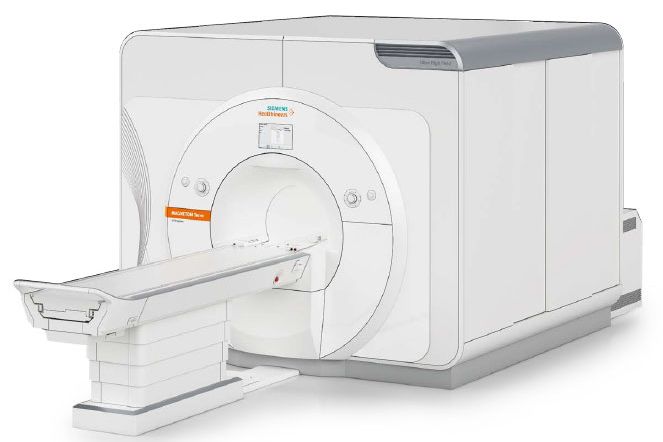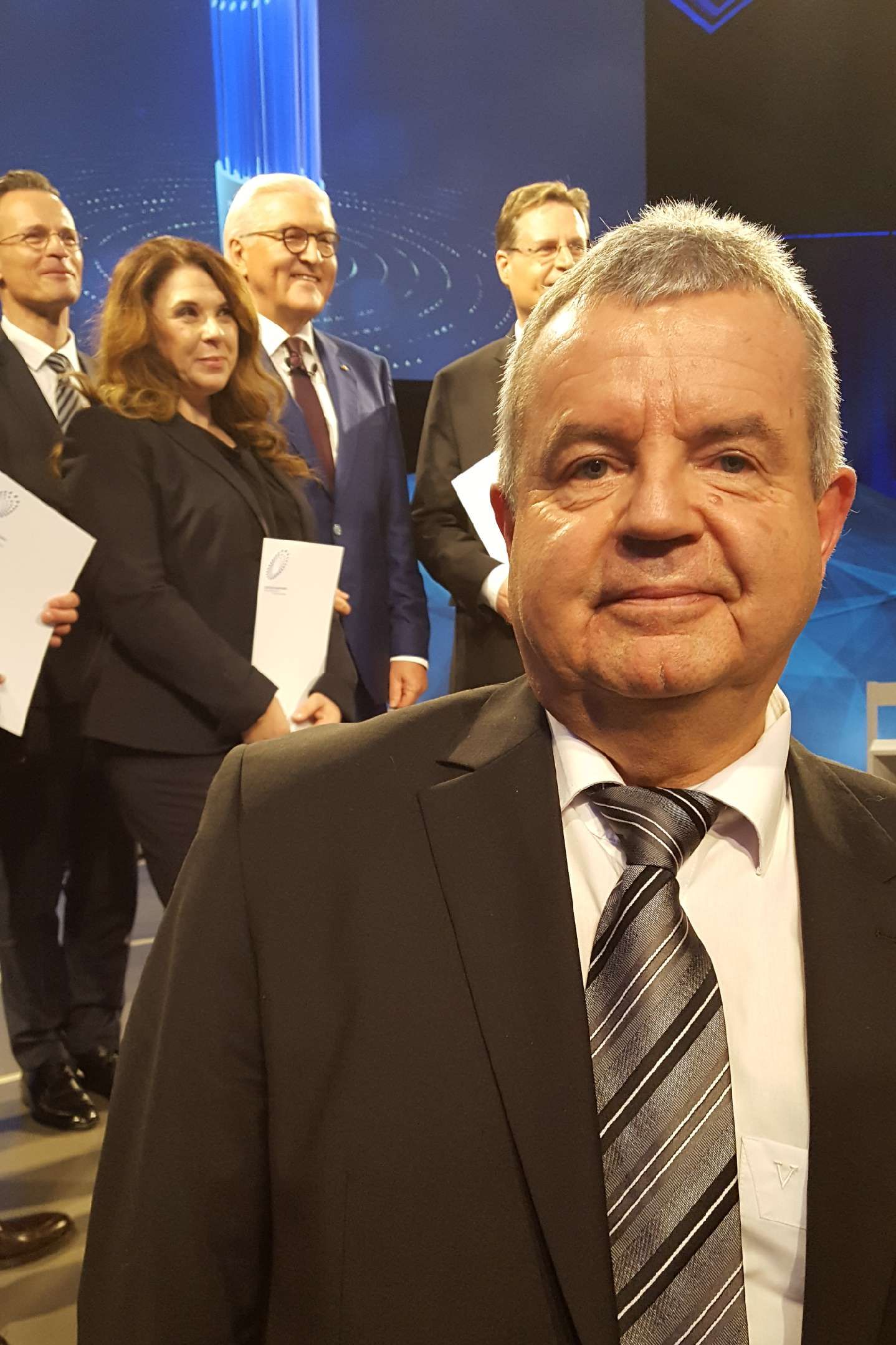
(Berlin, 29 November 2019) Christina Triantafyllou from Siemens Healthengineers in Erlangen, Arndt Dörfler, neuroradiologist at Erlangen University Hospital and Mark E. Ladd from the Radiology Department of the Cancer Research Centre in Heidelberg have been nominated for the prestigious German Future Prize 2019 by German President Frank-Walter Steinmeier. Together with international colleagues, they have made 7-Tesla Ultra High-Field MRI technology available for clinical use. Siegfried Trattnig, Medical Director of MedUni Vienna’s High-Field MRI Center of Excellence was also invited to the awards ceremony in Berlin for his important contribution to this medical imaging project.
Ultra High-Field MRI makes tiny tissue changes visible. Unlike conventional CT scanners, Magnetic Resonance Imaging (MRI) scanners do not use x-rays. The existing resolution of MRI scanners was not sufficient to identify certain changes in the nervous system, such as those that occur in dementia, epilepsy or Multiple Sclerosis, for example. However, by intensifying the magnetic field from 3 to 7 Tesla, it is possible to excite protons in the tissue with high frequency pulses in such a way that it is possible to see previously invisible tissue structures. Up until now, Ultra High-Field MRI scanners were so large and expensive that they were only used for basic research in specialised research centres (such as at MedUni Vienna's Center of Excellence for High-Field MRI in Vienna, for example). The nominated experts and their colleagues have also made the technology affordable for hospitals and such devices (Siemens TERRA 7T) have been licensed for medical use since 2017.

"Hundreds of researchers have worked on the development, both in universities and at Siemens," explains Mark Ladd. "The contribution made by Professor Trattnig and his team was very substantial. He provided much of the clinical data that motivated Siemens to bring the new field intensity onto the market as a medical device. The approval process for this can be very laborious and might not have succeeded without the contribution from Vienna."
Main prize to process optimizers
In the end the German Future Prize 2019 went to Alexander Rinke, Martin Klenk and Bastian Nominacher from the start-up Celonis SE. As students at the Technical University of Munich, the team developed a software that can analyze processes and make them more efficient by means of "process mining".
The German Future Prize was brought into being in 1997 by the German President at the time, Roman Herzog. The German Future Prize recognises outstanding technical, engineering and natural science achievements that lead to application-ready products. The prize is awarded by the German President and is worth €250,000.